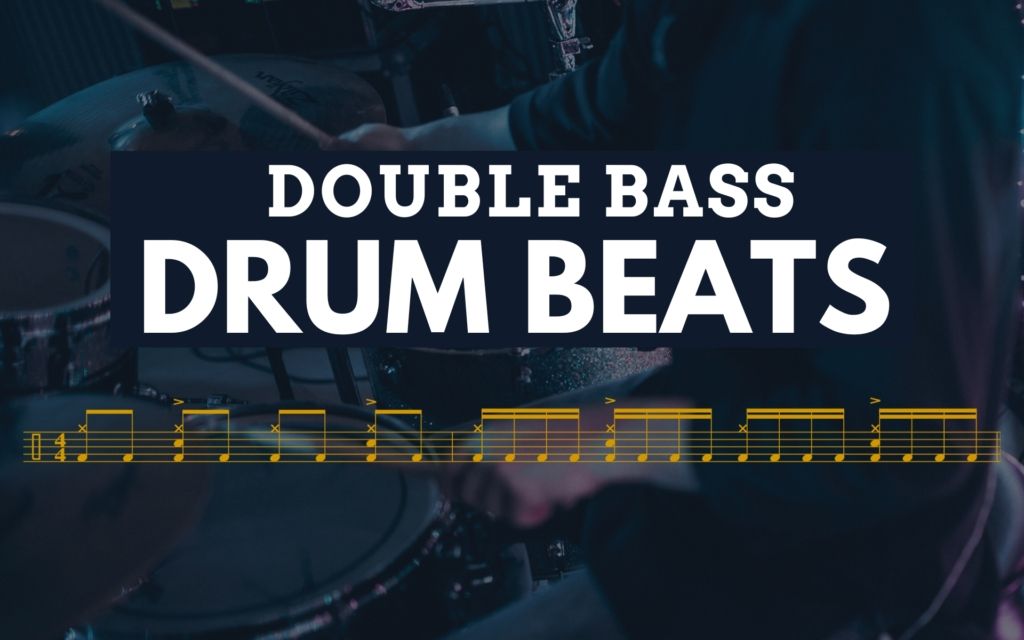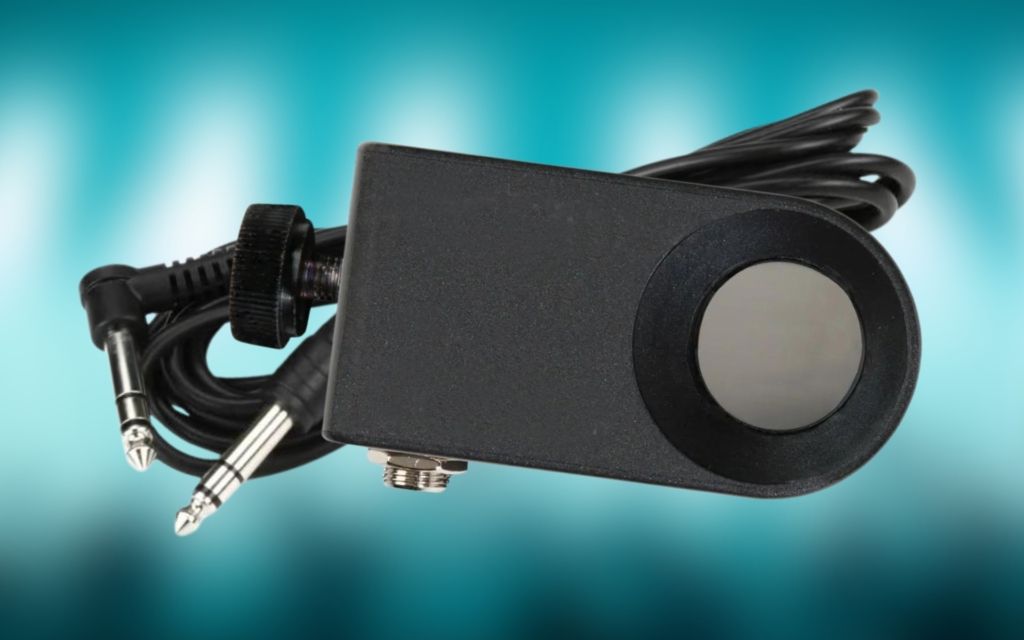In order to explore and learn more on the drums, it’s crucial to learn a wide range of essential drumming techniques. Learning new drum techniques will allow you to play a wider range of musical styles and understand more complex drumming concepts.
There are dozens of individual drum techniques to learn. The sheer number of them can leave beginner drummers feeling a little overwhelmed at times.
In this article, we’re going to look through some of the most important drum techniques that all drummers should learn while mastering this instrument. Each of these drum techniques has a massive impact on your drumming and will help you to play better. Let’s jump in!
Contents
Basic Drumming Techniques
How to Hold the Drumsticks
Learning how to hold the sticks is the first thing every drummer does. If you had a drum teacher, they may have told you to hold the sticks in a certain way. But did you know that there are a few standard ways of holding the sticks? These techniques are called grips, and each one has its own unique benefits.
The most popular way of holding drumsticks is called matched grip. It’s when you grip the sticks with the tip of your thumb and the middle of your index fingers. This is called the fulcrum. The rest of your fingers then lightly wrap around the rest of the sticks.

Another popular stick holding technique is called traditional grip. This is when you turn your left hand over and hold the stick between the middle of your fingers and control it with your thumb. This grip is a bit old school, and you’ll mostly see jazz drummers and classic rock drummers using it.
You may come across the terms French grip and German grip. These are just slight variations of matched grip, and they change how you rest your hands when playing.
It’s important to have a bit of interplay between your wrists and fingers no matter which grip you’re using. If you hold the sticks too tightly, you’re not going to be able to play quick and relaxed patterns. A grip that is too tight will also choke all the resonance out of the drums when you hit them.
Hitting the Drums Correctly
While different drum techniques are important, the most crucial one to learn at first is simply how to hit the drums. It may seem easy, but there are a few things that you should know.
The biggest thing to note is that you should let the sticks rebound off the drums when playing. If you dig the sticks into the drums and leave them there, they’re going to choke out the sound. Digging the sticks into the drums will also prevent you from using the rebound to your advantage to play fast patterns.
You should also aim to hit the sticks in the center of each drum. Doing this will ensure the full sound comes out.
If you hit off center, you’re not going to get a tone that resonates fully. It will end up sounding lighter and weaker. Aiming for the center will also ensure that you get a consistent sound every time you play a drum.
Be careful when playing not to strike the drums from too high above them. The higher you hold your hands, the louder the sound of your strokes will be. Volume is great sometimes, but not all the time. It will also be easier to play consistently when your hands are resting just above the drums before you play.
If you want to play softer notes, you should hold your sticks a bit closer to the drums. You can lift you sticks fairly high to play louder strokes. Mastering this is called having dynamic control, and it’s important for all drummers to have.
Rudiments
Rudiments are the hand patterns that make up most of drumming. They’ll exercise your hands as well as give you ideas of what to play on the drums. There are 40 official rudiments that drummers can learn. However, some of them are a bit more practical than others when it comes to playing on a drum kit.
Here are a few basic rudiments to get you started.
Singles
Single strokes are the most basic rudiment, but they have the potential to get you incredibly far on the drums. Having the ability to play clean singles around the drums is a skill every drummer should have. Playing singles will also help work on your wrist and hand technique.

Here are single strokes used in a drum fill:

Doubles
Double strokes are a rudiment that gets your fingers more involved in the action. While you can play them with pure wrist power at first, you’ll find that it’s easier to incorporate your fingers to get more speed.
It’s easier to play double strokes on the snare than it is to play them on the toms. So, make sure to play them on the toms as well to really work on your double stroke technique.

Here are double strokes used in a drum fill:

Paradiddles
A paradiddle is a combination of singles and doubles. It works the best of both worlds when it comes to wrist and finger movement. When working on paradiddles, make sure to make all the notes as even as possible. It’s fairly common for drummers to play the singles loud and the doubles a bit softer.

Here are paradiddles used in a drum fill:

Flams
Unlike the previous three rudiments, flams aren’t continuous. A flam is one stroke that you play on its own. You need to play both hands at the same time, with one falling just in front of the other. If your flam sounds like two notes played in succession, it’s not good drum technique. Flams should always sound like one stroke.

Here are flams used in a drum fill:

Advanced Drumming Techniques
Once you nail all the basics on the kit, you’ll find that your body will feel a bit limited in certain areas. You may want to learn a particular drum part, but your body just won’t be able to do it. This is where advanced techniques come in.
There are a few advanced drum techniques that you can learn that will help you play patterns much faster on the drums. They’ll also help you play things that are more elaborate and difficult.
Moeller Method
The Moeller Method drum technique refers to when you use a whipping motion of your arms to multiple strokes.
The idea behind it is that you’re using one arm motion and getting as much use out of that motion as possible. It’s a classic example of working smarter and not harder.
To play strokes using the Moeller, you need to whip your arm to play the first stroke. As you lift your arm, you tap the second stroke on the upward movement. You could play more than one stroke on the upward movement if you wanted to.
The best way to practice the Moeller is on the hi-hats. You can hit the shoulder of the hats on the downstroke and then the top of the hats on the upstroke. You’ll also hear a clear dynamic difference this way.



Push/Pull
The Push/Pull drumming technique is an alternative to the Moeller Method. It involves utilizing the rebound of the drums. You play a downstroke and then as the stick bounces up, you play another stroke using your fingers.
You can use the same exercises as the Moeller to practice the Push/Pull on the hi-hats.
Heel/Toe and Slide on the Bass Drum
Heel/Toe is one of the popular drum techniques used to play fast consecutive bass drum notes with a single bass drum pedal. It’s very similar to the Moeller in that you get two distinct strokes from a single leg movement.
It involves dropping your foot on the pedal using the weight of your leg and leaning most of it on your heel. Then you need to shift the weight to your toe as your lift your leg up.
A popular alternative to the heel/toe technique is the slide technique. This is when you put your toe in the middle of the bass drum pedal. You play the pedal once and then use the balance of the pedal to shift your toe to the top to get a second consecutive note.
Heel/Toe is used by drummers who play with their heels down on the pedals while the slide is typically used by drummers who play with their heels up.
They both sound the same and can be practiced the same way.

Independence
While drumming requires a fair bit of limb independence to begin with, you can take this to a very complicated level if you want to. Having good independence is a technique that most pro drummers have.
A basic practical example of good independence would be having the ability to keep time on your left foot while still playing a busy groove with all your other limbs.

A more complex example would be a busy Latin groove.

Most people think of limb independence when they’re thinking about this topic. However, dynamic independence is another technique that all drummers should have. Drums are naturally loud, but having good control over how loud you play is the sign of a musical drummer.
Ghost Notes
Ghost notes are soft notes played with your sticks, typically on the snare drum. They’re very subtle, yet have the ability to transform how a groove sounds. A good ghost note groove will sound incredibly tight and in the pocket.
Many ghost note grooves almost sound like there’s a subtle shaker sound that is supporting the groove. The ghost notes give a tighter feel of what subdivisions a drummer is playing in.
Here’s an example of a groove without ghost notes and them with them added. Notice how much they elevate the overall feel and sound of the groove.


Tips for Learning New Techniques on the Drums
Take It Slow
You need to practice drumming techniques very slowly to get used to them at first. Remember that your body thrives on muscle memory, especially when learning the drums. So, going through the motions slowly will help drive the point through.
You can get faster over time, but you won’t have the technique solidified if you didn’t start with a solid base of practicing it slowly.
Over-Emphasize the Movements
The best way to learn particular techniques is to exaggerate the movements. Let’s take the Moeller Method for example. It’s a whipping motion and exaggerating that whipping motion will help you visualize and feel how it aids in what you’re playing.
You should start by whipping your arms in big movements, and then make the movements smaller as you get faster with the patterns.
Repetition is Extremely Important
The only way to get good at technique is to play all the time. If you started slowly and you’re exaggerating the motions, the next point-of-call is to practice those concepts as much as you can.
Every drummer who has great technique doesn’t think about what they’re doing. They just do it naturally, through muscle memory. The biggest reason for this is that they put in the time before that to practice the techniques over and over.
Final Thoughts
There are several drum techniques that you can learn, all of them taking a while to master. It’s important to know that not every drummer needs to learn every single one of these techniques.
You don’t need to sit and practice your gravity blast beats if you don’t play in a metal band. Similarly, you may not need to have intense 4-way coordination if you play in a classic rock band.
However, certain techniques such as the way you hold your sticks and play the drums are very important to master. You may end up injuring yourself without them.









